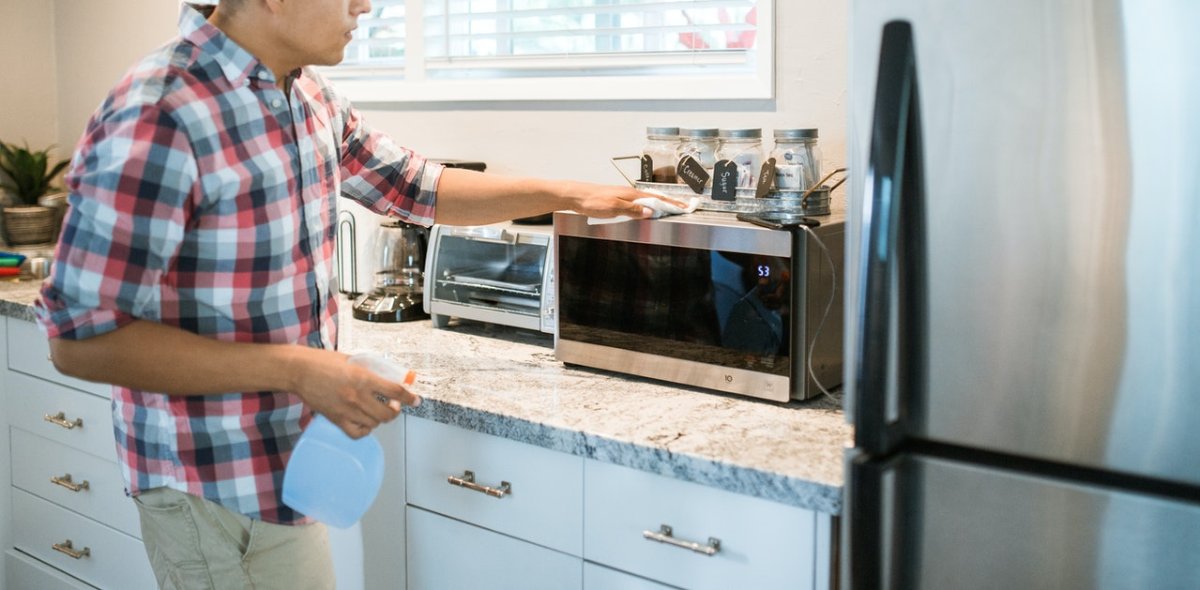Microwaves are magical kitchen must-haves. They can do anything — from heating your food to making potato chips and baking mug cakes. Most importantly, microwaves are time-saving devices in the kitchen.
But as convenient microwaves are, there are some kitchen tasks that are out of their job descriptions. Microwaves are limited, too. Heating up the wrong food or using the material to heat your food can ruin the appliance and cause accidents at home.
So what can you put in this trusty kitchen appliance? Can you microwave Styrofoam? How about paper plates or cardboard?
Instead of playing a microwave guessing game, we’ve listed down the things that you can or cannot put in your microwave.
What Materials Can You or Can You Not Put in the Microwave?
As mentioned above, the microwave can be used for any container. But there are certain items that can potentially ruin your food or cause serious health issues when put in a heating appliance like a microwave.
Can You Microwave Styrofoam?
Most people ask, “Can you put Styrofoam in the oven?” After all, Styrofoam is a common material used to hold food and some are labeled microwave-safe.
The safest answer is no. If you are using traditional Styrofoam containers, microwaving them is a big no-no. During normal use, the materials of the foam remain stable. But if you expose the foam to high temperatures, those materials will break down or melt. Even if you don’t see any visible damage on the foam, the oven can cause the toxic chemical styrene to contaminate your food. Also, styrene could increase your risk of cancer.
Another type of Styrofoam passes the FDA’s standards for microwave safety. This second type of Styrofoam is made from lower levels of hazardous chemical compounds and safer materials. It is also more stable when exposed to higher temperatures.
How can you determine if a Styrofoam is microwave-safe? Check the packaging for the label. It’s still up to you if you want to microwave your microwave-safe Styrofoam food containers. However, if you see signs of damage to the foam after removing it from the microwave, discard both the container and the food. Also, avoid microwaving if the container if there are cracks in it.
Can You Microwave Metal?
It’s never a good idea to put metal in your microwave. It’s a kitchen commandment: metal and microwaves do not go together. However, not all metal food containers are bad and what matters is the smoothness and shape of the metal.
Most pizzas are heated on microwaveable trays that are lined with metal. It’s OK to put metal food containers in the microwave since they can reflect heat into the pizza. But if the pizza is accompanied by foil or metal utensils that have wrinkles on them, they will trap the heat and cause them to build up, which may lead to a spark.
If the sparks come into contact with anything flammable, you increase your risk for a fire. So, it’s better to be safe than sorry. Avoid putting any metals in the microwave unless it’s labeled microwave-friendly.
Can You Microwave Single-Use Plastic Containers?
Plastic containers that come with butter, meringue, yogurt and other food items should only be used once. So, they are often made with cheap plastic or other materials that can’t stand the heat. Most single-use plastic containers contain bisphenol A, aka BPA. When exposed to high temperatures, BPA can cause the material to melt inside the microwave and release harmful chemicals into your food. This means you shouldn’t put single-use plastic containers.
Can You Microwave Cardboard?
Cardboard containers are usually harmless to food, but not so much when you decide to microwave them. Cardboards might contain glues, waxes and other harmful materials. When you heat your cardboard food container, it might leak toxic fumes, which can be harmful to your health
Needless to say, you don’t want toxic fumes contaminating your food. So before you heat your food, remove them from the cardboard container before putting them in the oven.
Can You Microwave Takeout Containers?
If you want to reheat last night’s takeout from a dinner party, date or just a simple dinner out, remove the food from the containers. Restaurant takeout containers usually have a metal rim or are lined with plastic materials. When you heat these containers, the wires might catch sparks or flames. Worst of all, your food might become contaminated.
Always check the label to see if the food is “microwave-safe.” If it isn’t, take the leftovers out and heat them in a microwave-safe container or plate.
Can You Microwave Certain Clothes and Fabrics?
This might seem an odd addition to the list, but there are “hacks” floating online that claim you can put dry fabrics in your microwave. You can’t. We don’t recommend putting any types of clothing or linens in your microwave.
Can You Microwave Aluminum Foil or Stainless Steel?

As a rule of thumb, anything made or containing copper, iron, steel or other hard metals should not be placed inside the microwave. As mentioned above, metal surfaces reflect the heat inside the microwave, which could lead to a fire.
When it comes to using aluminum foil, things can be tricky. Technically, you can microwave foil, but it should stay flat to avoid causing wrinkles, which could lead to ‘arcing,’ aka when the heat causes electric sparks to shoot across the foil’s surface.
Can You Microwave Ziploc Bags?
According to Ziploc, their bags are safe for reheating foods in the microwave as long as you follow the label’s directions. If you want to use another brand of bag storage, make sure that their products are microwave-safe and follow their directions for use. If you’re not sure if you can use a bag or not, play it safe and just don’t.
Can You Microwave Paper?
It’s safe to microwave wax paper, parchment paper, paper bowls, paper towels and paper plates. Paper towels, in particular, are used to cover food so it won’t spill oil when you’re heating your food. But if the paper towel has been used or has printing on it, it can be dangerous.
Disposable paper plates are often harmless but some paper plates are coated with a thin layer of plastic. Before you microwave a paper plate, check if it’s microwave-safe.
Your microwave is the most convenient part of your kitchen. Instead of trying to heat everything in this handy kitchen appliance, check if the container is microwave-safe first.



